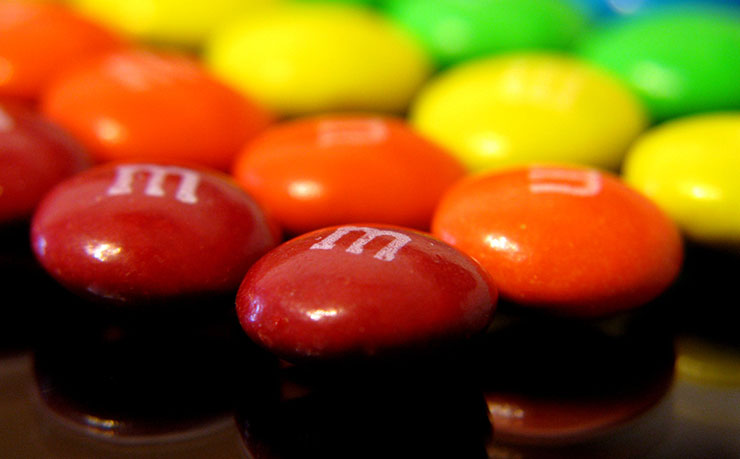Smoking has been on the government hit-list for decades. Why then are junk food and sugary drinks flying under the radar. Jonathan McGuane weighs in.
Obesity in Australia has risen steadily since the 1980’s such that almost two thirds of adults are now overweight or obese, a phenomenon colloquially referred to as “the obesity epidemic.”
High body mass index (BMI) is linked to cancer, chronic kidney disease, diabetes, musculoskeletal disorders, and cardiovascular disease, and costs the Australian economy $21 billion per year. High BMI also accounts for 5.5% and 14.1% of total disease burden (years of healthy life “lost”) among non-indigenous and Indigenous Australians, respectively; both second only to tobacco.
Whew.
Sorry for all the boring facts, but it’s important to establish this right up front: obesity is a huge problem (pun intended). The question is, how did we get this way?
The vast majority of Australians put the blame squarely at the feet of obese people themselves – after all, simply reducing one’s caloric intake and increasing energy expenditure should theoretically decrease body fat and normalise BMI. However, this view ignores the fact that in modern Australia, people are exposed to a huge variety of strong influences that increase their propensity for developing obesity, and unlike the other major lifestyle risk factors (smoking and alcohol overuse), food consumption is essential to life.
Structural and cultural factors decrease the accessibility of healthy food, promote consumption of energy-dense nutrient-poor food, increase sedentary behaviour, and decreased levels of exercise create what has become known as an “obesogenic environment”. These include advanced advertising and marketing techniques, the low cost of energy-dense food, poor urban planning, inadequate food literacy, and human genetics/biology – all factors outside the control of individuals.

The fact that interventions focussing on individuals (e.g. pharmacological, educational and behavioural) have not worked reinforces this concept. The effect is most devastating among people of low socio-economic status and low educational attainment, Indigenous Australians, some groups of overseas-born Australians, and those living regionally.
Lots of things could be done to counter these influences, but the most important ones centre around food. This is because more than half of Australian adults aged 18-64 already perform the recommended weekly amount of physical activity, and although exercise does have a positive, dose-related benefit on body weight – more so in combination with dietary change – as well as cardiovascular risk, measures to incentivise participation in organised physical activities overseas haven’t worked.
When I started researching for this article, I planned to include a memory of the early-morning activities we used to participate in at primary school (appropriately named “Huff ‘n’ Puff” by the principal), as an example of the role that school-based efforts can play in reducing childhood obesity.
As it turns out though, the evidence is that such programs have only a modest or no/transient effect on BMI.
In contrast, the proportion of Australians who meet the dietary guidelines for the five food groups is as low as 4% for vegetables and legumes/beans, while 35% of total daily energy intake comes from discretionary foods (typically high in saturated fat, salt, sugar, or alcohol).
Thus, I argue that in order to tackle obesity, we need to focus on the ‘food side’ of the equation: reducing consumption of energy-dense nutrient-poor food, and increasing consumption of healthy food.
Realistically, food companies are not going to be part of the solution, given that the components that entice and in some cases addict consumers to products (e.g. fat, sugar, alcohol and salt) are the same ones largely responsible for the obesity epidemic. Only government can enact the policies needed to counter the overwhelming effect of the obesogenic environment we live in.
Here are three suggestions that should be implemented right now.

1. Introduce a ‘soft-drink tax’
I’ll start with the obvious one, calls for which have been around in various iterations for a couple of years. Although there has been much debate on whether a tax on sugar or sugary drinks would cut obesity, the fact is that Australians obtain almost 20% of their daily energy intake from sugar (well in excess of the 10% level recommended by the World Health Organisation), and males aged 14-18 obtain 31% of their total sugars from sugary drinks (predominantly soft drinks and flavoured mineral waters), while the figure for females aged 19-30 is 21%.
In Mexico, a 10% tax decreased 12-month consumption of sugary drinks by an average of 6%, equating to a dietary reduction of >4L per person, while a 1 cent per ounce tax in the US city of Berkeley decreased sales of sugary drinks by 10% one year after its introduction.
Modelling shows that a 20% tax on sugary drinks here would not only decrease obesity by around 2% and reduce healthcare costs by $609 million, it would also increase productivity by almost $2 billion and bring in $400 million in revenue.
That’s a lot of cash that could be funnelled into further anti-obesity programs and health services in the community.

2. Restrict marketing of energy-dense, nutrient-poor foods
We’ve all been there: You’re in line at a supermarket or fast food restaurant and the kid in front of you is having a meltdown because he’s been told he can’t have the oh-so-conveniently-placed lollies he saw on TV just this morning between episodes of “Thunderbirds Are Go” and “My Little Pony,” or the boxed meal with the tie-in to the latest animated Hollywood merch-fest.
It’s aurally offensive for all concerned, and not much fun for the parent, I can assure you from personal experience.
The fact is, kids’ food choices and preferences are strongly influenced by advertising, and children who watch 20 or more hours of TV per week are twice as likely to be overweight/obese than other children (although both the sedentary nature of television watching and exposure to junk-food advertising may contribute to this effect).
The two voluntary initiatives introduced by the Australian Food and Grocery Council in 2009, purportedly to reduce advertising and marketing of unhealthy food and beverages to children, have had essentially zero effect.
Obesity in childhood predisposes to obesity in adulthood, and obesity in parents is, in turn, a strong risk factor for obesity in offspring, through the influence of parental behaviours, attitudes to food, and feeding styles. It’s a vicious intergenerational cycle, and we should be taking strong action to protect our most vulnerable citizens from obesity, as we would any other preventable disease.

3. Implement better labelling on processed foods
The voluntary Health Star Rating (HSR) system was introduced in 2014, ostensibly to provide rapid nutritional information to consumers in the form of a simple ideogram (0.5 – 5 stars). However, anomalies in the way in which foods high in sugar (I’m looking at you, more-than-one-teaspoon-in-four-is-pure-sugar Nutri Grain) can obtain good ratings engender scepticism in the scheme.
Part of the problem is that the rating attempts to integrate antagonistic criteria (‘negative’ points for saturated fat, total sugar, and sodium content; and ‘positive’ points for protein, fibre, fruit, nut, legume, and vegetable content) into a linear scale, and there is scant evidence that consumers understand this calculus.
“Traffic light” labels are the best and most readily understood mechanism of rapidly conveying nutritional information to consumers, but have been opposed by the Australian Food and Grocery Council. Given that the current system was only recently introduced, a complete change seems unlikely at this point; however, improvements to the HSR system such as inclusion of added sugar in the calculation or restriction of its usage on discretionary foods should be implemented.
FINALLY, it’s worth noting that Australia spends comparatively little on preventative health generally – this should be boosted significantly. In addition to the above measures, the National Preventative Health Taskforce (abolished in 2014 in an incredibly short-sighted move by the Abbott government) should be reinstated, to provide leadership and co-ordination and to set specific targets for anti-obesity efforts.
This is the body that produced the report on which the 2012 tobacco plain packaging legislation – which led to the most substantial reduction in smoking prevalence in the last 20 years – was based.
Ongoing research and pilot programs into additional potentially effective strategies, particularly in sub-populations at greatest risk of obesity (e.g., Indigenous and low-income communities) are also essential.
The economic case alone should spur dramatic action at governmental level, given that the already huge healthcare costs of diseases related to obesity are predicted to increase by up to 520% in 2032-33 over 2002-3 levels.
Like regulating tobacco and alcohol consumption, government has a moral obligation to intervene and prevent the disease and death that will befall millions of Australians if radical strategies to encourage healthy eating and activity levels are not implemented now.
Barriers to action and fluctuating political will must be overcome with courageous, sustained, and bipartisan effort to tackle what is, literally and figuratively, a problem of growing proportions.
Donate To New Matilda
New Matilda is a small, independent media outlet. We survive through reader contributions, and never losing a lawsuit. If you got something from this article, giving something back helps us to continue speaking truth to power. Every little bit counts.





